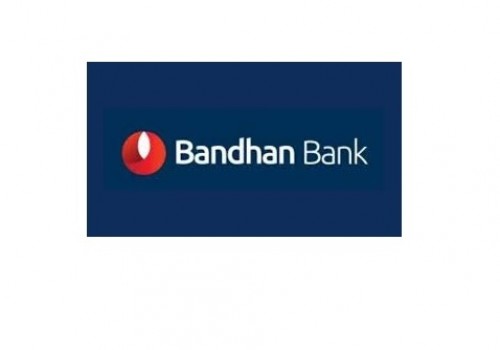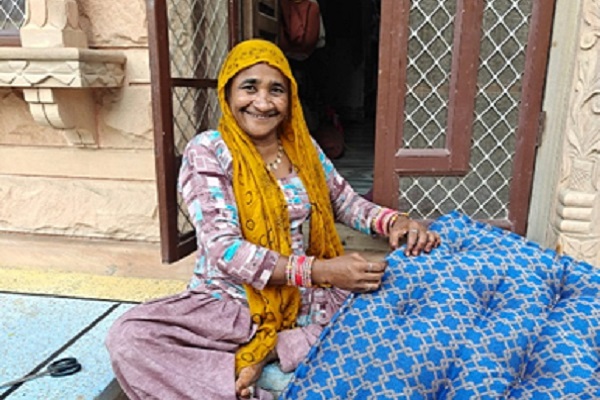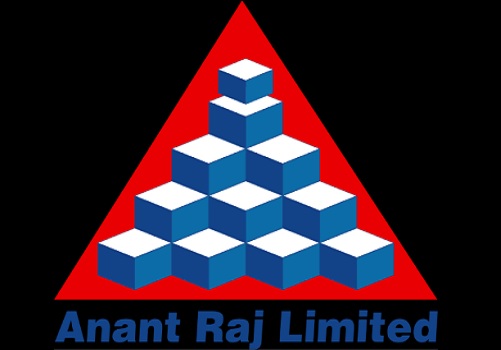Buy Bandhan Bank Ltd For Target Rs.390 - ICICI Securities

Baffling stress pool calls for elevated credit cost; reports a whopping loss
Bandhan Bank (Bandhan) reported a whopping loss of Rs30bn – not anywhere near expectations. Recognising the severity of EEB stress pool (including NPAs, restructured pool, SMA-1/2) of Rs195bn (>35% of portfolio), it arrived at a provisioning requirement of Rs95.2bn through its assessment of recoveries from collections and CGFMU cover, but ignoring any benefit from Assam relief scheme. To this extent, it created Rs55bn of provisions knocking off almost 8% of consolidated advances in one single quarter. With 50% coverage on the overall stress pool and improving collection trends, hope prevails on credit cost normalisation in a couple of quarters. NIMs should largely bottom out (only caveat being interest is still booked on the restructured pool). Disbursements rebound for both EEB as well as non-EEB portfolios and should support growth. This sudden recognition to create provisioning has eroded the book value by 14% for FY22E. We therefore revise our target price to Rs390 (earlier: Rs441) and maintain BUY. Key risks: less than anticipated level of recovery, and derailment of asset / liability franchise amidst challenges.
* Collection efficiency improves MoM, yet lagging: Sep’21 collection efficiency (excluding NPA) improved to 93% from 77% in Jun’21 (88% in Q2FY22 vs 86% in Q1FY22). With gradual rise in activity levels, CE improvement from Jun’21 to Sep’21 was broad-based: for Assam, it improved from 49% to 82%, West Bengal (WB) from 73% to 92%, and rest of India from 85% to 94%. Including arrears, collection efficiency rose to 129% in Sep’21 from 83% in Jun’21 (111% in Q2 vs 98% in Q1). However, as of date, there still remain 4% non-paying customers and 17% part-paying.
* GNPAs spike due to forward flow from SMA buckets: With forward flows from SMA buckets, gross slippages were significantly elevated at Rs29.4bn with >14% annualised run-rate (over and above Rs16.8bn in Q1FY22). This was partially offset by recoveries and upgrades of Rs6.2bn. GNPAs rose to 10.8% (vs 8.2% in Q1FY22 / 6.8% in FY21). On a positive note, there were no write-offs and hardly any top-up loans.
EEB GNPAs spiked to 13.6% (vs 9.3% in Q2FY22 and 7.6% in FY21) with WB at 17.8% (12.7%), Assam at 24.3% (17%), and other states at 6.5% (3.8%). EEB segment SMA-2 pool was almost flat QoQ at 2.5%: 1.8% for WB, 4.5% for Assam, 2.7% other states. However, the SMA-1 pool moderated to 7.1% (vs 10.1% in Q1FY22 / 2.8% in FY21) with 8.7% for WB, 8.7% for Assam, 5.2% other states). Additionally, the 1-30dpd bucket has corrected to 11.1% from 24.6% QoQ.
During the quarter, Bandhan restructured Rs34.9bn of EEB loans in addition to the Rs40.6bn in Q1FY22. Exposure of Rs39.7bn was restructured in WB and Rs29.6bn in Assam. All in all, as of Q2FY22, EEB stress pool was bafflingly high at Rs195bn (36% of the book) including NPAs at Rs73.3bn, restructured pool at Rs69bn, SMA-2 pool at Rs13.5bn and SMA-1 pool at Rs38.6bn.
* Knocks off 8% of advances in Q2FY22 to take coverage to 50% of overall stress pool: Recognising the severity of the stress pool at Rs195bn and to further strengthen the balance sheet, Bandhan created whopping stress provisions of Rs55.7bn knocking off almost 8% of the consolidated loans. Through the assessment of stress pool, it arrived at an overall provisioning requirement of Rs95.2bn (17-18% of EEB portfolio). This was post estimated recoveries of Rs45bn-60bn from the stress pool (based on current collection trends) and CGMFU recovery of Rs25bn-30bn (to be claimed post Mar’22). Over and above this, there will be recovery from Assam relief scheme given that it has 60% market share in Rs70bn relief package announced by the state government. However, it has not considered this recovery in its assumption of provisioning requirement.
To build up this provisioning, in Q2FY22, Bandhan created Rs21bn standard asset provisions and Rs15bn towards improving specific loan loss provisioning resulting in PCR of 74% (vs 62% in Q1FY22). With this, it carries specific loss provisioning of Rs65bn and additional standard asset provisioning of Rs24.4bn. Management believes the provisioning created now should be sufficient to account for asset quality issues caused by the pandemic and need for further provisioning in coming quarters will be minimal. As collections are improving, it should now see normalised level of provisioning of 1.0-1.5%.
Higher credit cost in H1FY22 and current stress pool makes us build in credit cost of 9.6%/2.0% for FY22E/FY23E leading to earnings downgrade in FY22E.
* Assam relief package provides upside risk: Of the Rs63.5bn EEB portfolio in Assam, Rs35.8bn qualifies for the state government’s recently announced relief as well as incentive for MFI loans. CGFMU (insurance) coverage is available for its EEB exposure of Rs143bn – more than 25% of EEB portfolio. Against payment of guaranteed premium (of 0.5-1.0%), it protects the lender from incremental loss beyond 3%, as 75% of loss over 3% will be borne by the guarantee provider and 25% has to be borne by the bank.
* Interest reversals on stress pool drag NIMs: After surprising positively in Q1FY22, NIMs derailed in Q2FY22 to 7.6% (vs 8.5% QoQ) due to interest reversals on incremental stress and access liquidity. With stress subsiding from Sep’21 level and deployment of liquidity into growth, NIMs should gain support. We are buildingin margin (calculated) of 7.2%/7.3% for FY22E/FY23E as against 7.4% in FY21.
* Growth moderates amidst challenges around stress pool: After pulling back on growth with 8% QoQ decline in advances in Q1FY22, there was 2% QoQ growth in Q2FY22. The YoY momentum was still modest at 7%. Bank has disbursed Rs130bn in EEB with proportion of EEB individual inching up to 20% in incremental disbursements.
* Housing portfolio flat due to higher prepayments; GNPAs at 3.7%: Despite Rs9.8bn disbursements in housing, the loanbook has stayed flat due to higher than normal prepayment (due to BT-out) and additional CLSS subsidy. Lending to NBFCs, commercial banking portfolio grew QoQ by 5%. Overall, we are building-in credit growth of 10%/16% (earlier 16%/22%) for FY22E/FY23E respectively. Mortgages too had GNPA of 3.7% (vs 3.4% in Q1FY22 / 3.1% in FY21). Bandhan further restructured Rs2.68bn in non-EEB portfolio taking the cumulative restructured pool to Rs13bn.
* Focus on deposit granularity stays: Deposits were up 6% QoQ thereby reporting 24% YoY growth (28% in Q1FY21 and 37% in Q4FY21) to Rs819bn. Retail deposit proportion improved by a further 100bps to 84% and CASA by 170bps to 44.6%. Average SA balance for non-EEB customers has risen 5% QoQ to Rs60.8k. Average SA balance for EEB customers too increased to Rs1.4k from Rs1.1k QoQ.
To Read Complete Report & Disclaimer Click Here
For More ICICI Securities Disclaimer https://www.icicisecurities.com/AboutUs.aspx?About=7
Above views are of the author and not of the website kindly read disclaimer




















